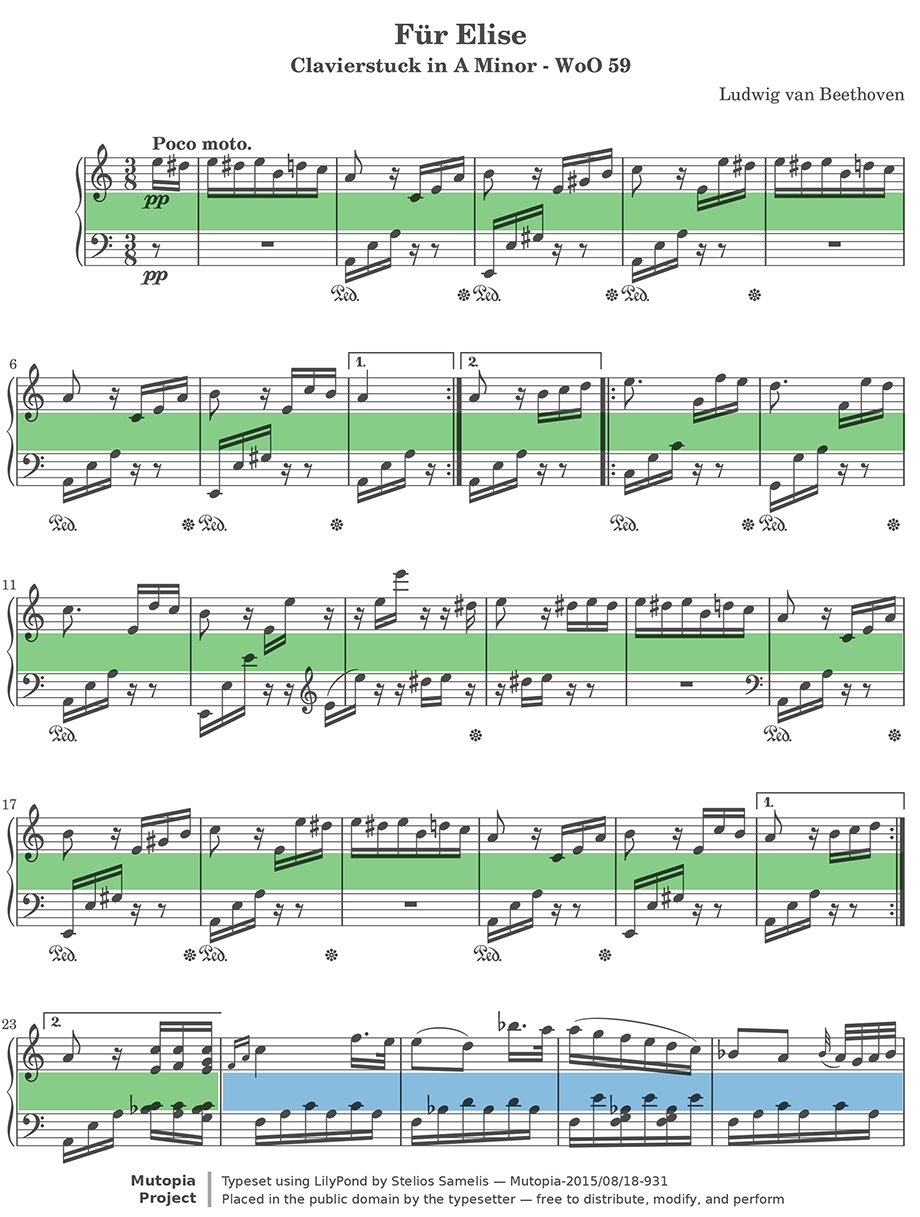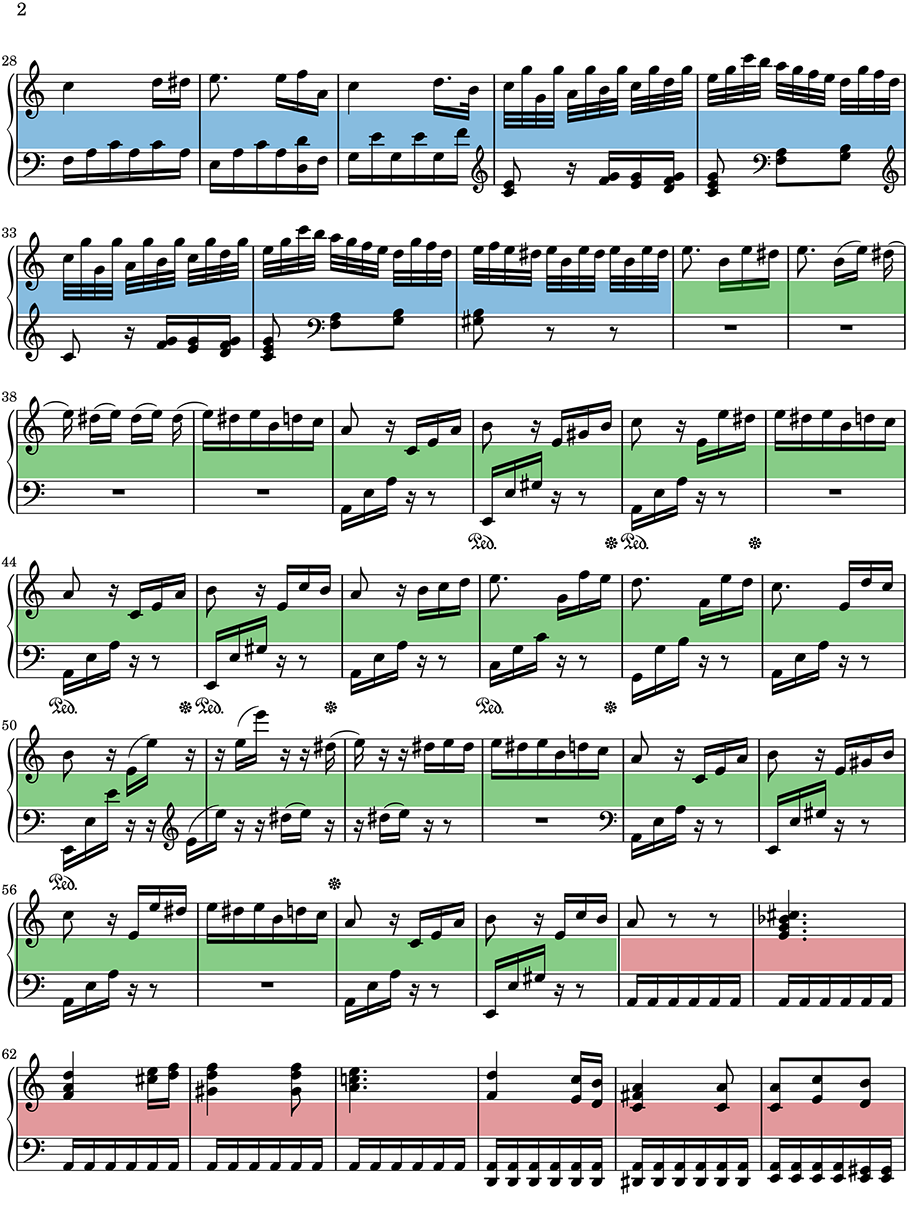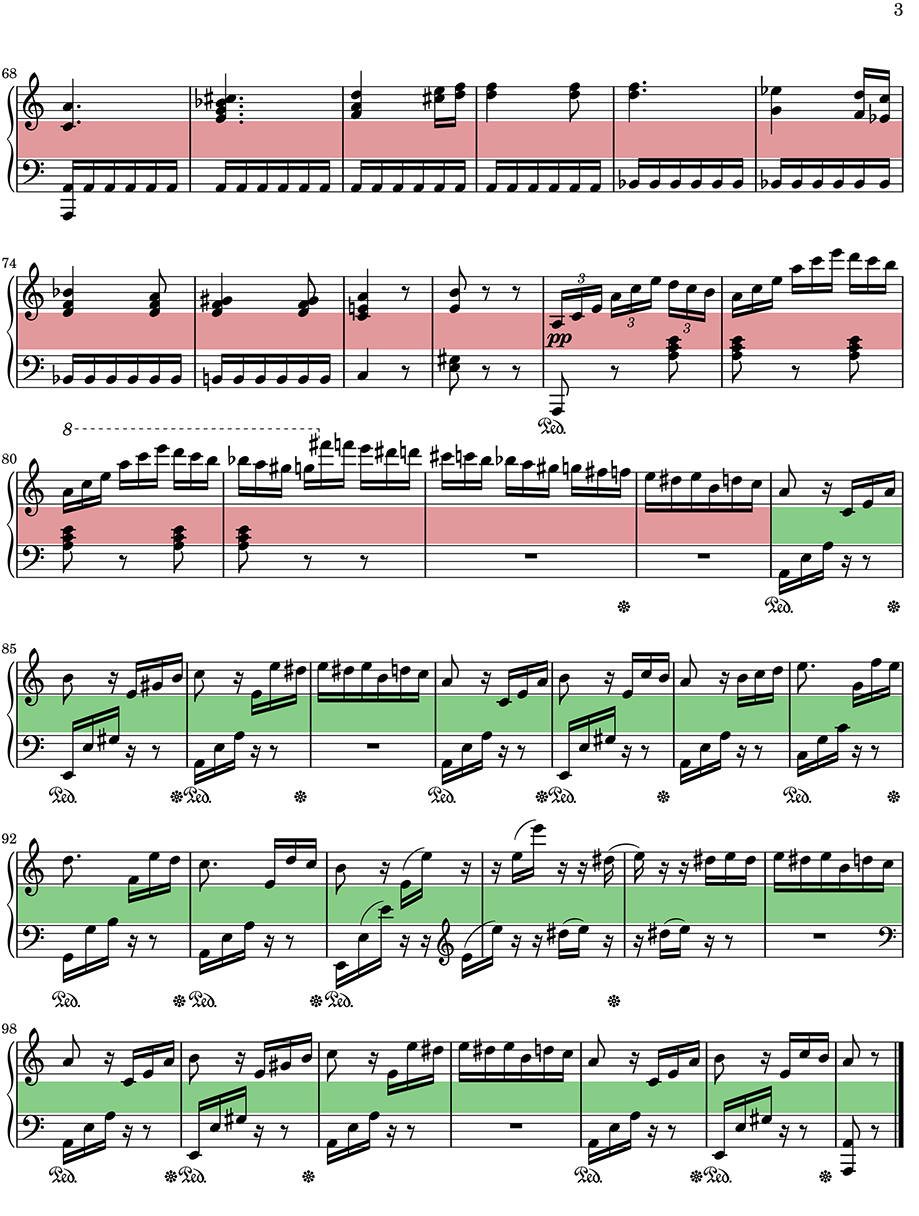
HOSTS- Jeremy Burns, Matthew Scott Phillips
TYPE- Theory
DURATION- 90:53
BUMPER MUSIC- "Fur Elise" (Ludwig Van Beethoven, performed by Dan Collins of HDPiano)
ANNOUNCER- Mike Cunliffe
Moving forward in our discussion of form and analysis, we will dig deep into the rondo form. We will listen to a popular example, Fur Elise, and yap about the form in real time. Ready your theory brains!
MOTIVE- The smallest possible musical idea. A recurring combination of notes and rhythms that are recognizable, in some shape or form, throughout the piece. Motives can be grouped together as sub phrases, which can grouped together as PHRASES.
PHRASE- The smallest possible musical statement that stands on it's own as a complete thought. These can vary in length and typically end in a state of either full or partial repose. This state of repose is also known as a CADENCE. PHRASES are often grouped together to form PERIODS.
PERIOD- When two PHRASES are played back to back and the 2nd of the two has a stronger CADENCE than the prior. This has a question/answer feel to it also known as the ANTECEDENT/CONSEQUENT.
CADENCE- The harmonic goal, or resting point, of a chord progression or musical passage.
AUTHENTIC CADENCE- Considered the strongest of all cadences, this is typically a DOMINANT (V) chord resolving to the TONIC (I) chord.
HALF CADENCE- Considered the weakest, this cadence often leaves one desiring a greater resolution and a "cliff hanging" effect of suspense. The HALF CADENCE typically resolves to a DOMINANT (V) chord.
DECEPTIVE CADENCE- This usually occurs when a chord progression ends on a VI chord (or any chord that includes scale degree 1) when you would expect to hear the TONIC (I) chord.
THE PREVIOUS TERMS WERE DISCUSSED, IN DETAIL, IN
EPISODE 20-FORM AND ANALYSIS PT.1
BINARY- This form consists of two sections, an A and a B section. The sections may be OPEN or CLOSED.
TERNARY- This form consists of 3 sections, often an A and a B section, with a return of the A acting as the 3rd section. Also, there may be a C section. The sections may be OPEN or CLOSED.
CLOSED- A closed section will end with a complete harmonic resolution, such as an AUTHENTIC CADENCE.
OPEN- An opened section will end with an incomplete harmony, such as a HALF CADENCE, that will want to move into the next section.
THE PREVIOUS TERMS WERE DISCUSSED, IN DETAIL, IN
EPISODE 53-FORM AND ANALYSIS PT.2
SONATA- Not to be confused with the sonata genre, this arrangement of musical ideas was popular in the Classical period. It involves the exposition (introducing the primary and secondary themes), the development (where these themes are played with and varied) and the recapitulation (where we return to the original material).
EXPOSITION- The first part of a sonata form, this introduces the PRIMARY and SECONDARY THEMES with a connecting TRANSITION between them.
TRANSITION- This short passage of music will allow for a MODULATION to a new key.
DEVELOPMENT- This begins the second part of the sonata form. During this section, a new key is introduced and the main themes are varied and played with. A new theme will sometimes also be introduced.
RETRANSITION- At the end of the DEVELOPMENT, this will be the transition back to the home key.
RECAPITULATION- Now that we have returned to the home key, we will repeat the EXPOSITION. The PRIMARY THEME will be just as it was in the EXPOSITION. However, the SECONDARY THEME will be in the original key or the PARALLEL major or minor of said key. The main thing is that we hold the TONIC of the original key. This will also require a different TRANSITION between the two themes.
THE PREVIOUS TERMS WERE DISCUSSED, IN DETAIL, IN
EPISODE 93-FORM AND ANALYSIS PT.3-SONATA
RONDO- Usually this is the final movement of a symphony. It is typically upbeat and light hearted. The SMALL RONDO has five parts:
REFRAIN- Noted as the A section, this passage of music begins the rondo form. As the name implies, this section, or part, will return a few times within this form. This is typically considered the "hook", or the most recognizable part, of the piece.
EPISODE- After the refrain, a contrasting section will occur. This will be noted as B, C, etc.
-The SONATA form has 2 main parts, the REFRAIN and the EPISODE. These parts may be connected by a TRANSITION or a RETRANSITION to aid in the modulation process.
THE REFRAIN (A)
The REFRAIN consists of the primary theme. This is often the most recognizable part. In analysis, we would not that as the A section. This will be in the key of the tonic.
THE EPISODE (B,C)
The EPISODE consists of a theme that contrasts with the REFRAIN. This may be in a different key than the REFRAIN. Usually, the 2nd EPISODE (C) will be larger with more development and will often involve meter or tempo changes from the REFRAIN.
There are 2 main types of RONDO FORMS:
-The SMALL RONDO- ABACA (five part)
A= I (i)
B= V
A= I (i)
C= ?
A= I (i)
-The LARGE RONDO-ABACABA (seven part)
A= I (i)
B= V
A= I (i)
C= ?
A= I (i)
B= I (i)
A= I (i)
Notation provided by:
Stelios Samelis 2015
-This rondo begins with a well known minor melody. This is where we establish our home key (Am) and the main theme. We will call this REFRAIN the A SECTION. This repeats twice. At measure 24, we experience a change in mood and key (F major). This begins the EPISODE known as the B SECTION.

-On m.36, we return back to our REFRAIN (A). On measure 60, we see a completely different EPISODE. This begins the C SECTION. Notice how the the mood has become edgy and tense. It is in the key of Am but a lot of dissonance is being built over this droning A note in the bass.

-Finally, in m. 84, we return to the A SECTION, with no repeats. This closes the piece.


